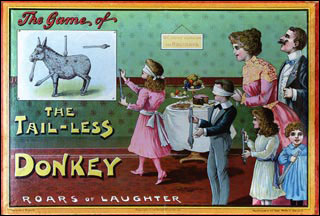
Just for fun : board games
Before the era of television, board and card games were a popular family entertainment and they remain an enjoyable opportunity for families to play together, competing and interacting around the table. Games are also played on computers, game consoles and even mobile phones, but these are usually played by lone players. Board games continue to be developed, some using old themes or variant editions such as South Australian versions of Monopoly and Trivial Pursuit, and some again based on television shows.
Board games date back to the ancient civilizations, but were played by adults. The earliest board games for children were intended to be educational - games of geography and history, initially produced by map makers and book sellers. These emerged towards the middle of the 18th century. Teaching geography, history, science and even religion through play became a fashionable method of education and was urged upon parents by John Locke, a highly respected and well-known educational theorist of the day and later by the French philosopher Jean Jacques Rousseau. Children's books and games were to become an integral part of the nursery and reflect the interests and aspirations of the middle class, as well as its optimism, enthusiastic spirit of inquiry, and adventurous nature.
Broadly speaking there are three categories of game: race, strategy and the card game. There are thousands of variations on each of these types.
- Race games are played by two or more players with the object to win. Rewards and penalties are encountered along the way. It was the most usual format for the many educational games produced during the 18th and 19th centuries, as it introduced an element of excitement into the lessons of geography, history or morals being imparted by the game. Examples include The game of goose, Wallis's complete voyage round the world, The new game of virtue rewarded and vice punished and Crystal palace game.
- Strategy games comprise three types: war games, most recognisably represented by chess; hunting games, which include Halma and Fox and geese; and alignment games, such as Noughts and crosses.
- Card games specifically intended for children appeared around the same time as the first board games. A great number were produced and included educational games, such as The counties of England, or questioning cards on a variety of subjects - botanical, zoological, religious. Happy families, first produced during the 1860s, endures today, as does Snap. These were the first card games deliberately intended to amuse.
Teetotums were used for playing games during the 18th and most of the 19th centuries as dice were associated with gambling. A teetotum was similar to a spinning top with between four to eight sides and was made of bone or ivory. In some 20th century games a similar effect was achieved with a cardboard spinner, with a match pushed through the centre. Counters come in many varieties from simple plastic discs, to moulded or flat lead figures specific to a game.
The role of the purely educational game would pass - perhaps coinciding with the Education Acts of the 1870s and the availability of formal schooling for all. Games would still continue as a popular form of entertainment but were more usually games of pure fun. Ludo and Snakes and Ladders were marketed in the late 19th century, both based on far older games. Although Snakes and Ladders originally had a moral purpose, this aspect gradually disappeared until it became purely a game of chance. Games manufacturers were also astute and attuned to current events: war games encouraged patriotism. Called to arms is an Australian game about the Boer War; Dug outs and trenches about World War I and the Around the Commonwealth by aeroplane game celebrated flying, in particular some of the long distance flying races. Games manufacturers also continually updated games to reflect changing fashions and models: The Bicycle game and Motor ride are examples of these.
Further reading:
Goodfellow, Caroline. A collector's guide to games and puzzles London: Apple Press, c1991 LC
Shefrin, Jill. Ingenious contrivances: table games and puzzles for children Toronto: Friends of the Osborne & Lillian H. Smith Collections: Toronto Public Library, 1996
Holden, Robert. Race to the finish: an exhibition of Australian children's board games from colonial times to the present day Manly, N.S.W.: Manly Art Gallery & Museum, 1986
Internet links:
State Library of South Australia: Children's Literature Research Collection. Games
Items 1 - 12 of 15














